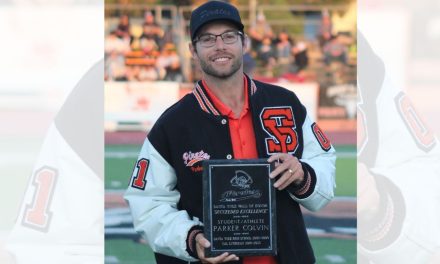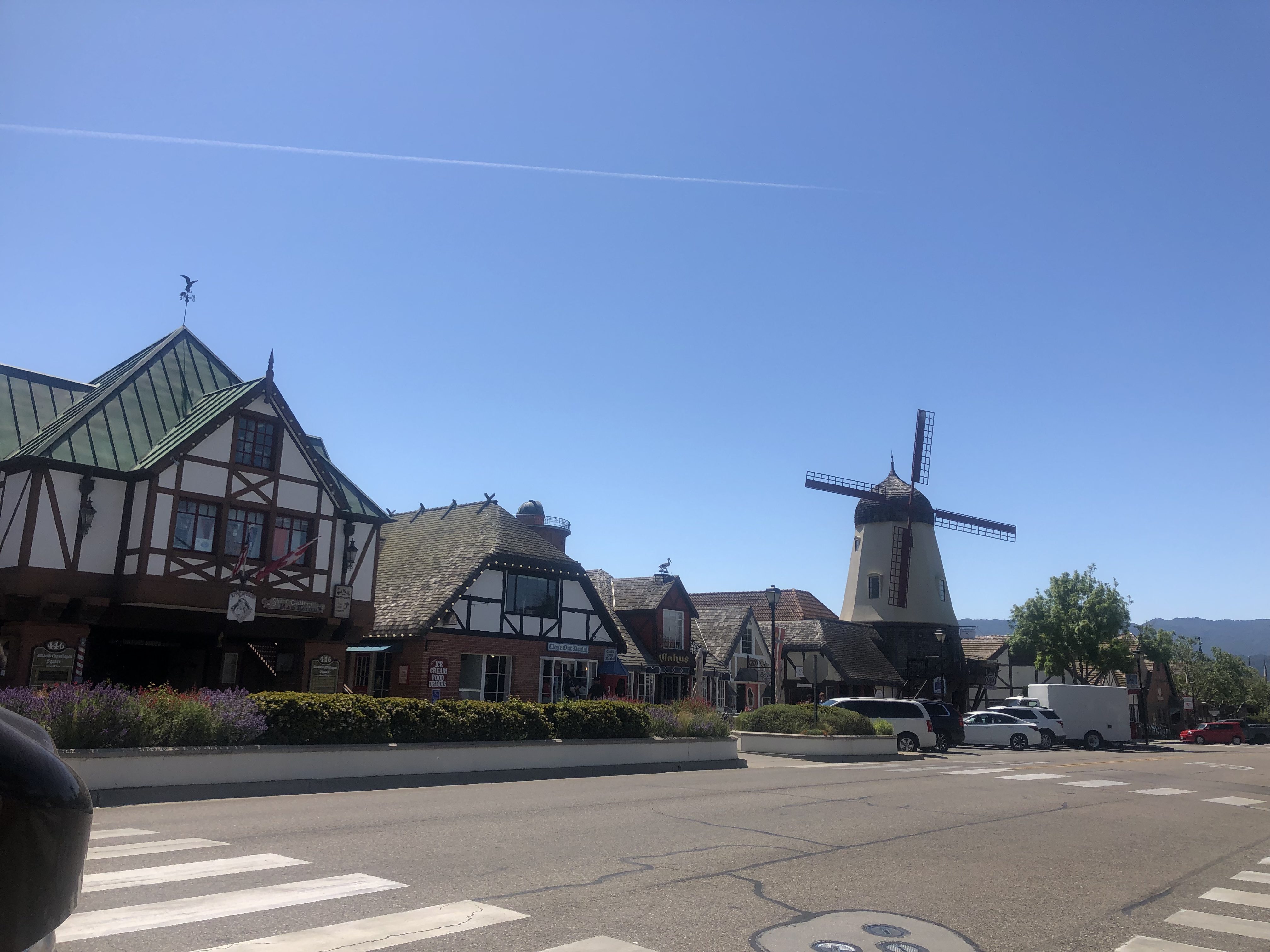By Raiza Giorgi
publisher@santaynezvalleystar.com
Six candidates for the ID1 water district board and four candidates for the Santa Ynez wastewater board gave a wide range of opinions at a forum Sept. 27 at St. Mark’s-in-the-Valley Episcopal Church.
Candidates differed especially sharply on the issue of government transparency, with incumbents praising their districts’ efforts and challengers heavily criticizing them.
About 45 people were in the audience for the forum that was co-sponsored by the nonprofit group WE Watch and the Santa Ynez Valley News.
The candidates for the board of the Santa Ynez River Water Conservation District, Improvement District No. 1 (ID1) are Allen Anderson, challenging incumbent Brad Joos for the at-large seat; Anita Finifrock, challenging Jeff Clay for the Division 2 seat; and Brian Schultz, challenging Kevin Walsh for the Division 3 seat.
Board candidates for the Santa Ynez Community Services District are challengers David Beard and Robert D’Ambra and incumbents David Higgins and David Seymour.
Candidates were asked questions that had been drafted by the forum sponsors, with ID1 candidates seated first, then SYCSD candidates, and finally all candidates taking questions from the audience.
The first question for ID1 was about water-conservation incentives, and what the candidates would recommend other than higher rates.
Andersen said that ID1 hasn’t done enough, and the current policy hinders ratepayers because they are charged more per unit of water below a certain amount and a lower rate for the water beyond that amount.
“This might work for profit businesses but doesn’t work for water conservation. We need to reward people for conservation, as long as (the district receives) the minimum amount to run the operation and monies set aside for capital improvements,” Anderson said.
Incumbent Clay disagreed and said the district has offered many incentives for users, such as rebates for installing low-flow toilets and giving out free shower heads.
“ID1 will come inspect your property and do an effective analysis. For agricultural users we offer training for irrigation and encourage people to attend the meetings,” Clay said.
Finifrock added she would add incentives for encouraging drought-tolerant landscaping and installing rain barrels.
Schultz said there are new technologies for leak monitoring and section meters that give reports on amount of usage.
Candidates also were asked how the district can better inform customers and involve them in their decisions, because many local people don’t know much about ID1 and others have criticized its customer relations and its relationships with other agencies.
Finifrock said the district’s website needs to be redone because it is hard to navigate, and the district should be sending out newsletters about projects. The meeting time of 3 p.m. makes it difficult for people who work to attend, she added, and the district doesn’t take video of meetings for people to watch online.
“The agendas are hard to read, and it needs to be clear what items are discussion and which are action items,” Finifrock added.
Joos disagreed, saying the website is quite clear and that people need to come to the meetings.
Schultz said that his primary issue for running was a lack of communication from the district manager, Chris Dahlstrom, after it took six months for him to get an answer on an issue that was important to him.
“He refused to speak to me, and when I went and spoke at a meeting I got a letter from their attorney and a bill. No wonder people don’t come to meetings,” Schultz said.
Walsh said that as long as people’s water turns on they don’t have a problem, and the board’s meetings are a democratic process, where the materials are on the website and minutes are in detail.
“I am disappointed by the legal costs ID1 uses and their relationships to other agencies, as people have called and complained to me they don’t get answers. There is also no reason not to tape the meetings and have them available real time, and 3 p.m. is a ridiculous time to meet,” Anderson said.
Clay said that he doesn’t hear from customers, which to him implies nothing is wrong. The district staff does a fantastic job, he said.
“We are made aware of every complaint and there are relatively few. You will hear negative things about our manager and staff, but you have to be in the valley long enough to figure out what’s going on,” Clay said.
He said he had underwear and socks that had been in his drawer longer than some of the candidates have been in the valley.
After a short break, the SYCSD candidates were seated.
The first question to that group was also about transparency and how the district could more effectively inform constituents and involve them.
Beard, a challenger, said a lack of agency transparency is the main reason he is running. His said his experience included not getting answers to questions, such as when he asked if the district was building a treatment plant and was told no, and then saw that the district recently released plans for a treatment plant.
“We asked Jeff Hodge (the general manager of SYCSD) to pull back on the annexation and request community input. They refused. They don’t answer questions and are evasive. They are arrogant and have a terrible attitude with the public,” added D’Ambra, the other challenger.
A controversy about inadequate notification of residents erupted in the spring of 2016 when SYCSD proposed to annex more than 400 acres and nearly 400 homes in western Santa Ynez.
Higgins, an incumbent, rejected that argument and said that SYCSD was recently awarded a certificate of transparency.
Incumbent Seymour said confusion during the annexation process was caused by a letter from LAFCO, the Local Agency Formation Commission, that was sent without the district board’s knowledge. That letter arrived before the district’s own explanatory letter.
“This is the first time this board annexed a large amount, but we learned from it and we needed to be more proactive and get information out,” Seymour said.
The second question was about minimizing rate increases while still meeting costs.
D’Ambra said the district has alienated other agencies such as Solvang on solutions for lowering rates and has been abrasive not only to the public but to one of its own board members.
“The female on the board is belittled and talked over. Talking to a Solvang City Council person who attended a meeting and said she left. That’s a pretty bold statement about the attitude of this board,” D’Ambra said.
Higgins talked about the process of requesting proposals before the board talks about rate increases, and Seymour added that no one attends the meetings on rate increases, which says to him they are fine with the extra charges.
On whether the district should develop its own wastewater treatment facilities rather than contracting with Solvang. Seymour said not at this time, although it’s worth exploring because the current contract with Solvang isn’t in the district’s favor.
“We have to pay before we contest any bill, and we cannot amend our contract. If we had our own local control (the situation would be different), even though it’s the most expensive (option),” Seymour clarified.
Beard and D’Ambra said they are both adamantly against building a treatment plant, and working with Solvang is the right solution.
Higgins also said he opposes building a plant at his time because it’s the most expensive option, but he noted that when Solvang runs the plant there is no control for Santa Ynez citizens.
After all the candidates reconvened they took several questions from the audience.
When SYCSD candidates were asked why those annexed in 2016 hadn’t been surveyed first, Seymour had no comment and Higgins referred to the situation in the mid-1970s when the county put a moratorium on building until Santa Ynez built a sewer system.
D’Ambra said if the district had done more outreach it might have had a better response to annexation. Beard said it was wrong of the district not to do so and to refuse to talk to those inside the annexation boundary.
“They told us it was due to the high level of nitrates, and I am on the water board in my community and I can tell you the nitrate level has dropped, not increased,” Beard said.
ID1 candidates were asked about their expectations of staff. Andersen said they are to continue to provide water to their customers. He expects them to be more transparent and improve customer satisfaction.
Clay said the staff is great now and their job is to be the conduit to the board. Finifrock said there needs to be more transparency on the website, with the ability to find documents and records easier.
Schultz said customer service needs to improve, and nothing about the staff themselves but the policies they follow have to change. The billing process is such that they act like a collection agency, he said, and one woman he knows got a shut-off notice when her payment was $14 short.
Walsh said the challengers needed to apologize for criticizing the ID1 staff because they are excellent and doing a fantastic job.
In response to the same question, the SYCSD challengers said transparency needs to be at the forefront for the staff but also said they are only as good as their leaders. Both the incumbents defended the staff and said they are doing a great job.
“They said the system is a 20-year system and they have kept it running and clean for 40 years,” Higgins said.
Those who would like to watch the forum who were unable to attend can go to syvnews.com/news/local/election-id-and-sycsd-election-forum-from-st-mark-s/youtube_aff9fda2-e9e5-53a6-a04e-a9d56195c091.html.




